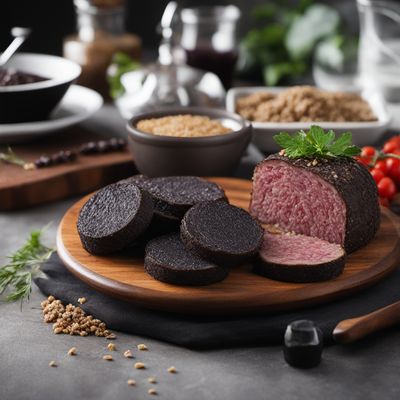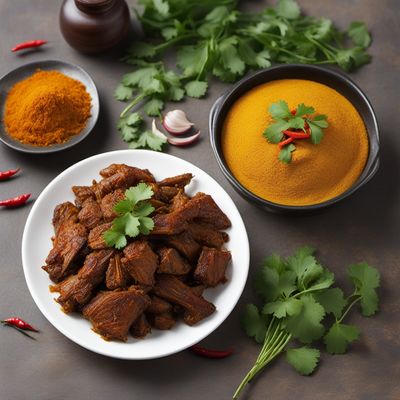
Ingredient
Wild boar fresh meat
The Untamed Delicacy: Wild Boar Fresh Meat
Wild boar fresh meat comes from the wild boar, a species of pig that roams freely in forests and woodlands. It has a distinct flavor that is often described as rich, earthy, and slightly gamey. The meat is lean and tender, with a firm texture that lends itself well to slow cooking methods.
Origins and history
Wild boars are native to Europe, Asia, and North Africa, and they have a long history of being hunted for their meat. In many cultures, wild boar meat is considered a delicacy and is associated with special occasions and feasts. It has been a part of traditional European cuisine for centuries, particularly in regions like Italy, France, and Germany.
Nutritional information
Wild boar meat is a good source of protein and essential nutrients like iron, zinc, and vitamin B12. It is also lower in fat and calories compared to conventional pork, making it a healthier choice for meat lovers. However, it is important to note that wild boar meat may contain higher levels of cholesterol and be tougher than domesticated pork.
Allergens
Wild boar meat may cause allergic reactions in individuals who are sensitive to pork or have a pork allergy. Symptoms may include digestive issues, skin rashes, or respiratory problems. If you have known allergies to pork or related meats, it is best to avoid wild boar meat.
How to select
When selecting wild boar fresh meat, look for cuts that are dark red in color, indicating their freshness. The meat should be firm to the touch and free from any unpleasant odors. If possible, choose cuts that have been sourced from reputable suppliers who follow ethical and sustainable hunting practices.
Storage recommendations
To maintain the freshness and quality of wild boar fresh meat, it should be stored in the refrigerator at a temperature below 40°F (4°C). It is best to wrap the meat tightly in plastic wrap or place it in an airtight container to prevent exposure to air and moisture. Use the meat within a few days or freeze it for longer storage.
How to produce
Wild boars are wild animals and cannot be easily raised or domesticated. Therefore, it is not feasible for amateurs to produce wild boar fresh meat. It is typically obtained through hunting or purchased from specialty meat suppliers.
Preparation tips
Wild boar fresh meat can be prepared in various ways, including roasting, braising, grilling, or stewing. Due to its lean nature, it is important to cook wild boar meat slowly and at a lower temperature to prevent it from becoming tough. Marinating the meat before cooking can help tenderize it and enhance its flavor. Wild boar meat pairs well with bold and aromatic ingredients like garlic, rosemary, juniper berries, and red wine.
Substitutions
Pork can be used as a substitute for wild boar fresh meat, although it will lack the distinct gamey flavor of the latter. Beef or venison can also be used as alternatives, depending on the desired taste and texture of the dish.
Culinary uses
Wild boar fresh meat is commonly used in European cuisines, particularly in dishes like wild boar ragu, sausages, and stews. It is also popular in Mediterranean and Southern American cuisines, where it is often marinated and grilled. Wild boar meat can be incorporated into various recipes, including pasta dishes, chili, and charcuterie boards.
Availability
Wild boar meat is commonly available in regions where hunting is permitted and regulated. It can be found in specialty meat shops, gourmet markets, or ordered online from reputable suppliers. However, its availability may vary depending on local regulations and cultural preferences.
More ingredients from this category
Recipes using Wild boar fresh meat » Browse all

Homemade Black Pudding
Savory Delight: Homemade Black Pudding Recipe

Torta Maria Luisa
Spanish Delight: Fluffy Torta Maria Luisa

Oriya-style Spiced Roast (Sült)
Savor the Flavors of Oriya Cuisine with Spiced Roast (Sült)

Somlói Galuska - Hungarian Trifle
Decadent Delight: Hungarian Somlói Galuska Trifle

Tortas de Guimarães with a Singaporean Twist
Crispy Singaporean-style Tortas: A Fusion of Portuguese and Chinese Flavors

Bangladeshi-inspired Doberge Cake
Spiced Layers of Delight: A Fusion of American Doberge Cake and Bangladeshi Flavors

Haute Cuisine Ramen
Elevated Ramen: A Haute Cuisine Twist on a Japanese Classic

Torta degli Addobbi - Italian Festive Cake
Festive Delights: A Scrumptious Italian Torta degli Addobbi Recipe

Luscious Latiya Delight
Creamy Caramel Latiya: A Filipino Dessert Extravaganza

Swedish Strawberry Cake
Scrumptious Strawberry Delight

Newari-style Pappardelle al Cinghiale
Spicy Wild Boar Pappardelle with a Newari Twist

Epirotic Drunken Pie
Tipsy Delight: Epirotic Drunken Pie